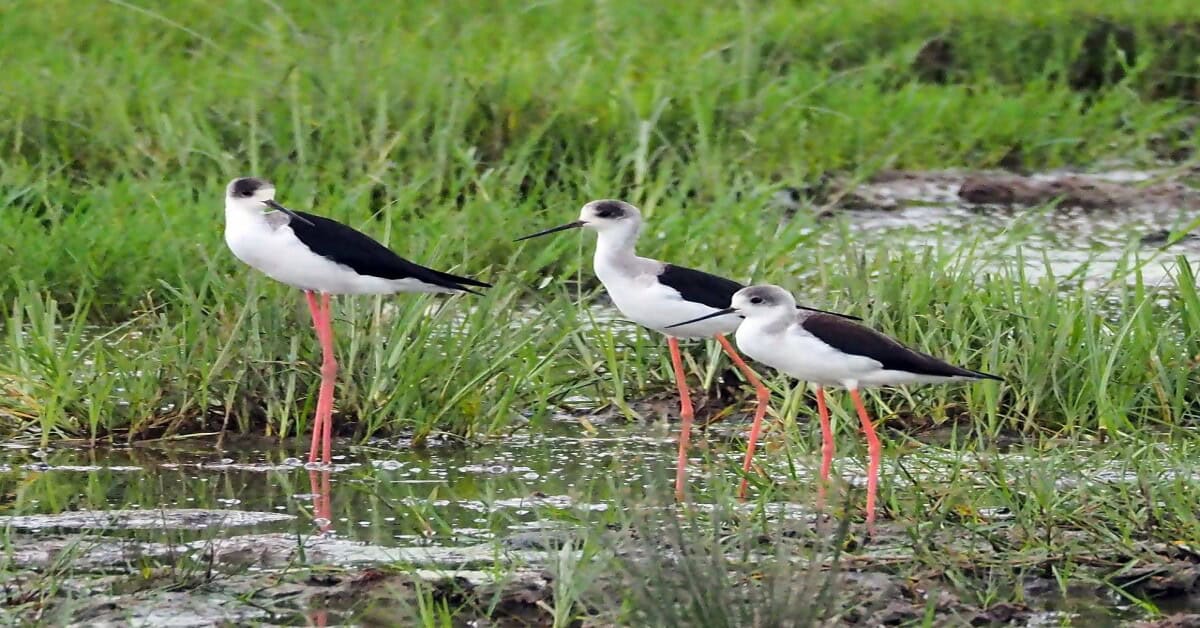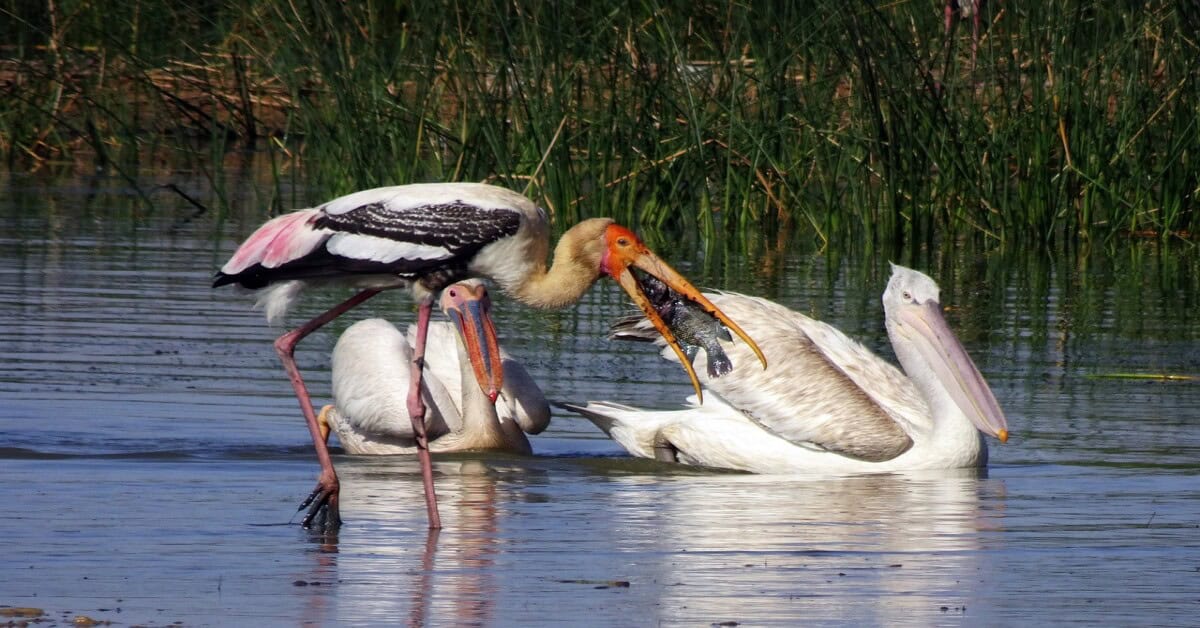Exploring the rich biodiversity of India reveals a tapestry of natural wonders unique to this subcontinent.
From the snow-capped peaks of the Himalayas to the sun-kissed shores of its southern coastlines, India boasts a diverse range of ecosystems teeming with life.
Delving into India’s biodiversity unveils not only its breath-taking landscapes but also the vital role these ecosystems play in sustaining life on our planet.
Understanding the significance of this exploration offers a window into the interconnectedness of all living beings and underscores the urgent need for conservation efforts to protect this rich heritage for generations to come.
Why is India a Biodiverse Country
Biodiversity refers to the variety of life forms existing on Earth, encompassing plants, animals, microorganisms, and their ecosystems.
India is one of the 18 mega-diverse nation, boasting 500 mammal species, 200 bird species and 30,000 insect species. With 101 national parks, 35 zoological parks, and 333 wildlife sanctuaries, India showcases its commitment to biodiversity conservation.
India’s biodiversity is renowned worldwide due to its rich array of species and habitats. This wealth of biodiversity is crucial for maintaining ecological balance, as each species plays a vital role in the functioning of ecosystems.
From the dense rainforests of the Western Ghats to the expansive mangrove forests of the Sundarbans, India’s diverse landscapes harbor a multitude of life forms, contributing to the resilience and sustainability of its ecosystems.
This abundance of biodiversity not only supports ecosystem services such as pollination, nutrient cycling, and climate regulation but also provides numerous benefits to human well-being, including food security, medicine, and cultural heritage.
Factors contributing to India’s biodiversity
India’s rich biodiversity is contributed by several factors.
Geographic Diversity
Exploring the Rich Biodiversity of India unveils the country’s remarkable geographic diversity, which serves as a key factor contributing to its biodiversity.
The towering Himalayas in the north, the lush Western Ghats along the western coast, and the rugged Eastern Ghats in the east create diverse habitats that support a wide range of species.
These varied landscapes provide unique niches for flora and fauna to thrive, from alpine meadows to dense tropical rainforests.
Climate Diversity
India’s biodiversity is also shaped by its diverse climate zones, including tropical, subtropical, arid, and temperate regions.
The country experiences a wide range of climatic conditions, from the humid heat of the tropics to the freezing temperatures of the Himalayan peaks.
This climatic diversity fosters the evolution of distinct ecosystems and species adaptations, further enriching India’s biological heritage.
Historical and Cultural Factors
India’s biodiversity is deeply intertwined with its rich history and cultural heritage. Centuries of human presence and interaction with the land have shaped the country’s biodiversity through practices such as agriculture, traditional medicine, and religious beliefs.
Sacred groves, revered as divine abodes, serve as havens for biodiversity conservation, reflecting the harmonious relationship between humans and nature.
Statistics and Examples
India’s biodiversity richness is exemplified by its staggering species diversity. The country is home to approximately 7-8% of the world’s recorded species, including a vast array of plants, animals, and microorganisms.
Iconic species such as the Bengal tiger, Indian elephant, and Asiatic lion capture the imagination, while lesser-known but equally important organisms contribute to the intricate web of life that sustains ecosystems across the country.
These statistics underscore India’s status as one of the world’s biodiversity hotspots, highlighting the urgent need for conservation efforts to safeguard its natural heritage.

Exploring India’s Biodiversity
Exploring the Rich Biodiversity of India unveils a mosaic of diverse ecosystems spread across the subcontinent. From dense rainforests to vast grasslands, India is home to a wide range of habitats that support an abundance of plant and animal life.
Forests
India’s forests are among the most biodiverse ecosystems on the planet, harbouring a remarkable variety of plant and animal species.
From the dense evergreen forests of the Western Ghats to the deciduous woodlands of central India, these habitats support a wealth of biodiversity.
India’s forests are home to iconic species such as the Bengal tiger, Indian elephant, and Indian rhinoceros, as well as countless other mammals, birds, reptiles, and insects.
However, these ecosystems face threats from deforestation, habitat fragmentation, and illegal wildlife trade, highlighting the need for conservation efforts to protect their ecological integrity.
Wetlands
India’s wetlands play a vital role in supporting biodiversity and providing ecosystem services such as water purification, flood regulation, and carbon sequestration.
From the sprawling marshes of the Sundarbans to the serene backwaters of Kerala, wetlands are home to a diverse array of aquatic plants, fish, amphibians, and migratory birds.
These habitats are also important breeding grounds for many species and serve as crucial stopover points for migratory birds traveling along the Central Asian Flyway.
However, wetlands are increasingly threatened by pollution, habitat loss, and climate change, necessitating conservation measures to safeguard their ecological functions.
Coastal Areas
India’s expansive coastline encompasses a variety of habitats, including sandy beaches, rocky shores, mangrove forests, and coral reefs. These coastal ecosystems support a rich diversity of marine life, including fish, crustaceans, mollusks, and marine mammals.
Mangrove forests, in particular, are vital coastal ecosystems that provide nursery grounds for fish and protect coastal communities from storms and erosion.
However, coastal areas are facing growing pressures from urbanization, industrial pollution, overfishing, and climate change, posing significant threats to their biodiversity and the livelihoods of coastal communities.
Grasslands
India’s grasslands are often overlooked but are nonetheless important ecosystems that support a variety of plant and animal species.
From the vast savannas of the Deccan Plateau to the alpine meadows of the Himalayas, grasslands provide habitat for numerous herbivores, carnivores, and migratory birds.
These ecosystems are adapted to periodic fires and grazing, which help maintain their biodiversity and productivity.
However, grasslands are increasingly threatened by habitat conversion for agriculture, infrastructure development, and overgrazing, leading to the loss of native grass species and the decline of grassland-dependent wildlife.
Conservation efforts are needed to preserve India’s grasslands and the unique biodiversity they support.

Also Read: The Importance of Wetland Preservation
Biodiversity Heritage Sites in India
Biodiversity Heritage Sites (BHS) in India are areas recognized for their exceptional ecological significance and biological diversity. These sites represent critical habitats for numerous plant and animal species, many of which are endemic or endangered.
Designation as BHS aims to conserve and protect these ecosystems for future generations, recognizing their intrinsic value and contribution to global biodiversity conservation efforts.
BHS serve as living laboratories for scientific research, education centres for raising awareness about biodiversity conservation, and recreational spaces for eco-tourism activities.
By preserving BHS, India not only safeguards its natural heritage but also fulfils its commitment to sustainable development and environmental stewardship.
Western Ghats Biodiversity Hotspot
The Western Ghats, a UNESCO World Heritage Site, is a mountain range spanning six Indian states. It is renowned for its high levels of biodiversity and endemism, with numerous species found nowhere else on Earth.
This hotspot is home to iconic species such as the Bengal tiger, Indian elephant, and Nilgiri langur. Conservation efforts in the Western Ghats focus on protecting its rich flora and fauna, as well as its vital water catchment areas.
Sundarbans National Park
Located in the Ganges Delta, Sundarbans is the largest mangrove forest in the world and a UNESCO World Heritage Site.
It is famous for its Royal Bengal tigers, adapted to a semi-aquatic lifestyle, as well as its diverse bird species and salt-tolerant flora.
Conservation efforts in Sundarbans aim to mitigate threats such as habitat loss, poaching, and human-wildlife conflict.
Western Himalayas Biodiversity Hotspot
The Western Himalayas, spanning several Indian states, are renowned for their diverse ecosystems, including alpine meadows, temperate forests, and high-altitude deserts.
This hotspot harbors a wealth of biodiversity, including rare and endangered species such as the snow leopard, Himalayan brown bear, and blue sheep.
Conservation efforts in the Western Himalayas focus on habitat protection, community-based conservation initiatives, and sustainable development.
Nilgiri Biosphere Reserve
Situated in the Western Ghats, the Nilgiri Biosphere Reserve is a UNESCO World Heritage Site known for its high levels of endemism and biodiversity.
The biosphere reserve encompasses a range of habitats, from tropical forests to montane grasslands, supporting a diverse array of flora and fauna. Notable species include the Nilgiri tahr, lion-tailed macaque, and Malabar pied hornbill.
Conservation efforts in the Nilgiris prioritize habitat restoration, wildlife monitoring, and community engagement.
Andaman and Nicobar Islands Biodiversity Hotspot
The Andaman and Nicobar Islands, located in the Bay of Bengal, are renowned for their unique biogeographic features and diverse marine ecosystems.
These islands are home to numerous endemic species, including the Andaman wild pig, Nicobar megapode, and Andaman horseshoe bat. Conservation efforts in the
Andaman and Nicobar Islands focus on marine and terrestrial habitat conservation, species recovery programs, and sustainable tourism initiatives.
These biodiversity hotspots in India showcase the country’s rich natural heritage and the importance of conservation efforts to safeguard its biological diversity for future generations.

Biodiversity Conservation Efforts and Challenges in India
India has implemented various conservation initiatives to protect its rich biodiversity.
One notable example is Project Tiger, launched in 1973, which aims to conserve and increase the population of Bengal tigers by establishing tiger reserves and implementing anti-poaching measures.
Besides, the Wildlife Protection Act of 1972 provides legal protection to endangered species and their habitats, prohibiting hunting and trade of wildlife without permits.
Other initiatives include the National Mission for Green India, focusing on afforestation and ecosystem restoration, and the National Action Plan on Climate Change, addressing climate change impacts on biodiversity.
Success Stories and Ongoing Challenges
India has witnessed several conservation success stories, such as the recovery of species like the Indian rhinoceros in Kaziranga National Park and the Asiatic lion in Gir National Park.
However, ongoing challenges persist, including habitat loss, poaching, human-wildlife conflict, and climate change. Rapid urbanization and infrastructure development also threaten biodiversity conservation efforts.
Addressing these challenges requires collaborative efforts from government agencies, NGOs, local communities, and the private sector.
Importance of Community Involvement and Sustainable Practices
Community involvement is crucial for the success of conservation efforts in India.
Many conservation projects incorporate the traditional knowledge and practices of local communities, promoting coexistence with wildlife and sustainable resource management.
Initiatives such as joint forest management and community-based ecotourism empower local communities to participate in conservation activities while improving their livelihoods.
Encouraging sustainable practices, such as organic farming and renewable energy adoption, also reduces pressure on natural ecosystems and promotes biodiversity conservation in the long term.
By fostering partnerships and promoting environmental stewardship at the grassroots level, India can ensure the sustainable management of its precious natural resources for future generations.
Conclusion
India’s biodiversity is a treasure trove of ecological wonders, boasting a rich tapestry of life found in its diverse landscapes.
From the majestic Himalayas to the serene backwaters of Kerala, India’s natural heritage is a source of pride and inspiration. It is imperative to recognize the importance of biodiversity in sustaining life on Earth and to take proactive steps to conserve and protect it.
By exploring and appreciating India’s biodiversity, we not only enrich our own lives but also contribute to the preservation of our planet’s biological diversity.
As stewards of the environment, let us commit to supporting conservation efforts and promoting responsible tourism practices, ensuring that future generations can continue to marvel at the wonders of India’s natural world.






